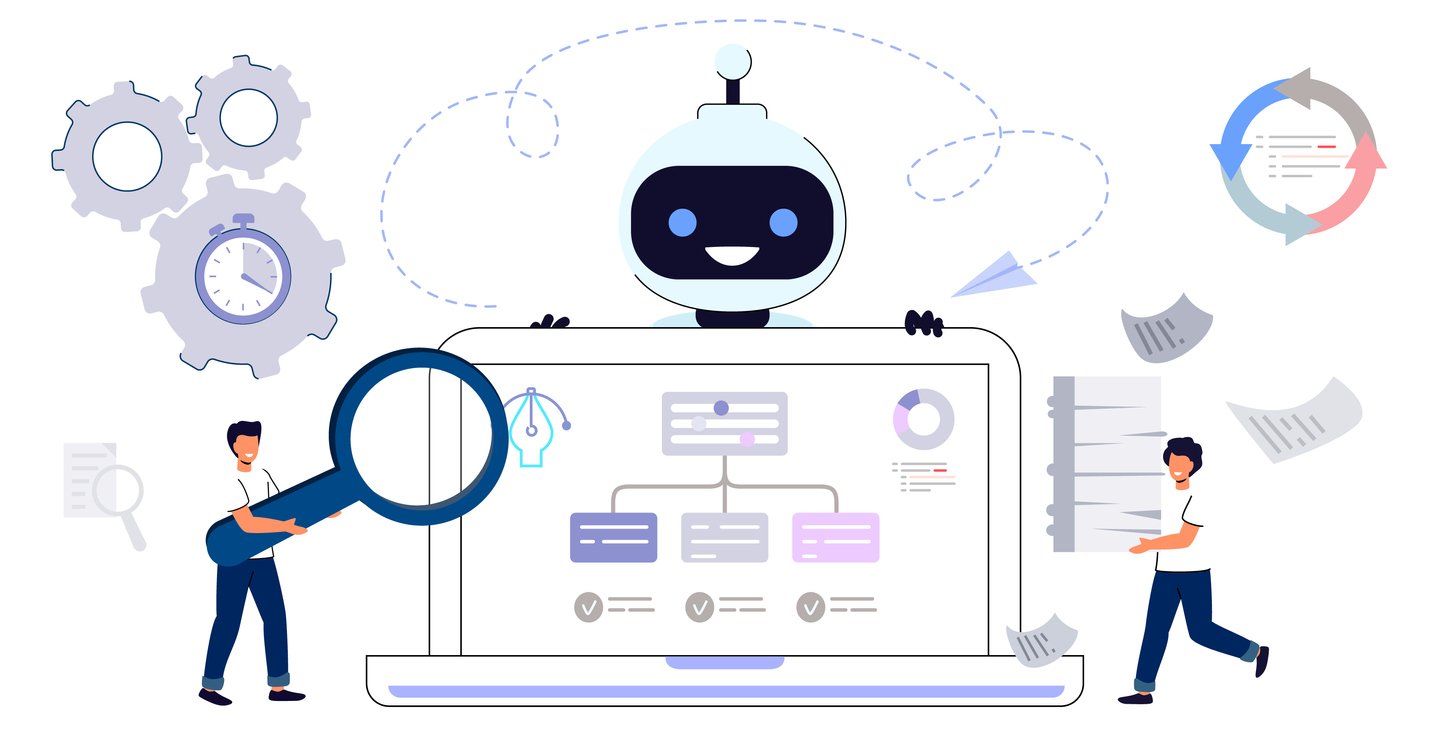
Skyrocket Productivity with Insurance Claims Automation
 Updated on
Updated on
 By Robins Dorvil
By Robins Dorvil
Robins Dorvil
With over 7 years of experience in the insurance industry, 4+ years as an Account Executive at Ringy CRM, and 17 years as a Creative Real Estate Inves...
learn more
Robins Dorvil
With over 7 years of experience in the insurance industry, 4+ years as an Account Executive at Ringy CRM, and 17 years as a Creative Real Estate Inves...
Table of Contents
Table of Contents
Insurance claims processing can be time-consuming and error-prone. But what if there was a way to streamline it, reduce manual errors, and boost efficiency?
The faster and smoother your claims process, the better the experience for your clients—and the less strain on your team. That's where insurance claims automation comes into play.
A report by McKinsey & Company shows that automation can reduce claims processing time by up to 50%, helping insurers handle claims more accurately while improving customer satisfaction.
But this is just the beginning. Imagine empowering your sales team to focus less on paperwork and more on driving business growth, as automation handles the repetitive tasks behind the scenes. Ready to learn how insurance claims automation can revolutionize your insurance operations? Let's dive in.
Understanding Insurance Claims Automation

So, what exactly is insurance claims automation?
Insurance claims automation refers to the use of advanced technology to streamline and enhance the claims process.
Instead of relying on manual tasks—where humans review claims, verify information, and process payouts—automation steps in to handle repetitive, data-heavy tasks with minimal human intervention.
From first notice of loss (FNOL) to final settlement, automation transforms how insurance companies manage claims, speeding up processes that used to take weeks, if not months.
The key drivers behind this transformation are several cutting-edge technologies, each contributing uniquely to make claims automation in insurance more effective:
|
Technology |
Role in Insurance Claims Automation |
|
AI analyzes vast amounts of data quickly, identifying patterns to predict outcomes and assist decision-making. |
|
|
ML improves over time by learning from past claims data, making the system smarter at detecting fraud or estimating payouts. |
|
|
RPA automates repetitive tasks like data entry, claims routing, and status updates, freeing up human employees for more complex tasks. |
|
|
NLP processes unstructured data, such as emails or claim forms, by understanding and extracting relevant information. |
Each of these technologies plays a vital role in modernizing the claims process, reducing manual labor, and improving both speed and accuracy. But the magic really happens when these tools work together, creating a seamless, end-to-end claims automation system that's not only faster but more reliable.
Benefits of Automating Insurance Claims
Now that we understand the technologies behind it, let's explore why insurance companies are turning to insurance claims automation in droves. The benefits are substantial, making a compelling case for insurers to adopt this approach.
1. Improved Efficiency and Reduced Processing Times
The old days of paper forms, manual approvals, and endless follow-ups are fading fast. With automation, what used to take weeks can now take days, if not hours.
For instance, RPA can automatically process claims as they come in, routing them to the appropriate adjuster or department without human intervention.
This drastically reduces bottlenecks and accelerates the entire claims cycle.
2. Enhanced Accuracy and Reduced Errors
Let's face it—humans make mistakes, especially when it comes to monotonous, repetitive tasks. Automation technologies like AI and ML ensure that errors are minimized, and decisions are based on data rather than guesswork. Machine learning, for example, can sift through historical claims data, learning which cases were successful and which had issues, helping to avoid common pitfalls. The result? Fewer costly mistakes, fewer rework loops, and more consistent results across the board.
3. Better Customer Experience and Satisfaction
Automation doesn't just benefit insurance companies—it's a game-changer for customers too. Faster processing times mean customers get their claims resolved quicker, which naturally boosts satisfaction. But it's not just about speed. With the help of NLP, insurers can interact with customers more efficiently, answering questions or processing requests through chatbots or email parsing tools.
No more waiting on hold for hours or dealing with confusing paperwork. A smoother, faster, and more transparent claims process leads to happier customers—and happy customers are more likely to stay loyal to your business.
Key Components of an Automated Claims Process

The heart of insurance claims automation lies in its ability to streamline every aspect of the claims process. From the moment a claim is filed to its resolution, automation technologies come into play, removing manual hurdles, improving accuracy, and speeding up decisions.
Let's break down the key components that make an automated claims process tick.
1. Automated Data Collection and Verification
The first step in any claims process is gathering and verifying customer data, and this is where automation shines. Using AI and Machine Learning (ML), insurers can automatically collect essential information from claimants, such as personal details, incident reports, and supporting documentation. Gone are the days of customers filling out lengthy forms—AI-powered systems can now extract data from various inputs like scanned documents, emails, and even voice calls.
But it doesn't stop at data collection. The real magic happens when automation systems integrate with external data sources, such as financial institutions, government databases, or third-party vendors. This enables real-time verification of the information provided by claimants.
For example, suppose a customer files a health insurance claim. In that case, the system can instantly verify medical records or billing information with hospitals or clinics, ensuring everything checks out without manual follow-ups.
2. Workflow Automation and Decision-Making
Once the data is verified, the claims need to be sorted, prioritized, and processed, which is where workflow automation takes center stage. With predefined rules and risk assessments, claims are automatically triaged based on factors like severity, complexity, and potential risk. Claims that fall into low-risk categories can be fast-tracked for approval, while higher-risk claims are flagged for further review by human adjusters.
What makes this even more powerful is the role of ML algorithms in decision-making. These algorithms can analyze vast amounts of historical claims data and learn patterns over time, enabling them to assist in complex decision-making.
For instance, if a claim involves multiple elements like property damage, medical expenses, and liability, ML can help insurers weigh each factor and provide recommendations for resolution. In some cases, automation can even process and approve simple claims without any human involvement, freeing up employees to focus on more complex cases.
This isn't just efficient—it's transformative. McKinsey reports that insurers can reduce claims operational costs by up to 30% by implementing workflow automation.
3. Fraud Detection and Prevention
Let's be honest—insurance fraud is a billion-dollar problem. The good news? Advanced analytics and AI are here to tackle it. With claims automation, fraud detection doesn't rely on hunches or outdated processes. Instead, it uses AI to analyze massive datasets, flagging suspicious patterns in real time.
For example, an AI-powered system might detect that a claimant has filed multiple claims with slightly altered details across different insurers—a common tactic in fraud schemes.
Even better, continuous learning models ensure that fraud detection systems improve over time. Every claim processed through the system adds to its database, helping it recognize new patterns of fraud that humans might miss.
By constantly learning and adapting, these systems can stay ahead of fraudsters, who are always looking for new ways to game the system. This proactive approach to fraud detection helps insurers save millions each year!
Incorporating automation in insurance claims isn't just about speeding up processes—it's about building smarter, more resilient systems that can handle everything from data collection to fraud detection with precision.
Challenges in Implementing Claims Automation

While the benefits of insurance claims automation are clear, it's not always smooth sailing. Transitioning from traditional claims processing to an automated system comes with its own set of challenges. From ensuring data security to integrating with legacy systems, insurers must navigate these hurdles carefully to reap the full rewards of automation.
Here are some of the biggest obstacles insurers face and how to overcome them.
Data Privacy and Security Concerns
When it comes to handling sensitive customer information, data privacy is non-negotiable. Insurance claims automation, by its very nature, involves the collection, storage, and processing of large volumes of personal data—from medical records to financial details. This opens up a can of worms when it comes to data protection regulations like GDPR in Europe or HIPAA in the U.S. One misstep, and an insurer could face hefty fines, legal battles, and a tarnished reputation.
To mitigate these risks, insurers must ensure their automation systems are fully compliant with relevant regulations. This means adopting strict encryption standards, controlling who has access to sensitive data, and regularly conducting audits to identify vulnerabilities. However, compliance is just one side of the coin, and cybersecurity is the other. Automated systems, no matter how sophisticated, can still fall victim to data breaches or cyberattacks. According to IBM's 2024 Data Breach Report, the average cost of a data breach globally is nearly $4.9 million.
So, how do insurers protect themselves? By implementing robust cybersecurity measures such as multi-factor authentication, continuous monitoring, and AI-powered threat detection. These solutions can help catch potential breaches before they escalate, keeping both customer data and company finances safe.
Integration with Legacy Systems
Another major challenge in adopting claims automation for insurance is dealing with outdated IT infrastructure, or as it's affectionately called, "legacy systems." Many insurance companies rely on older software systems that weren't designed with modern automation in mind. The result? A patchwork of tools that struggle to communicate with one another, leading to inefficiencies and disruptions.
Integrating new automation solutions into these legacy systems can feel like trying to fit a square peg into a round hole. It requires careful planning and expertise to avoid compatibility issues and downtime. In fact, a report by EPAM found that 45% of insurers cite legacy systems as a key barrier to digital transformation.
To overcome these challenges, here's what needs to be done:
- Assess Compatibility: Evaluate the compatibility of your automation insurance tools with your current systems and identify any potential integration points.
- Develop a Phased Approach: If your legacy systems are outdated or incompatible, consider a phased approach to integration. Start with smaller, less complex tasks and gradually expand the scope of automation.
Change Management and Employee Training
Let's face it—no one likes change, especially when it means learning new technologies and adjusting to new workflows. This is one of the biggest hurdles insurers face when implementing claims automation: resistance to change within the organization. Employees who have spent years doing things "the old way" may be skeptical or even fearful that automation could replace their jobs.
To address these concerns:
- Communicate Openly: Companies need to clearly communicate the benefits of automation to their teams, emphasizing that automation is there to enhance their work, not replace it. In fact, by automating repetitive tasks, employees can focus on higher-value activities, such as improving customer relationships or tackling complex claims.
- Provide Adequate Training: Employees need to feel confident using the new tools and understanding how they fit into the overall claims process. A comprehensive training program, complete with hands-on practice and continuous learning opportunities, can help ease the transition. And let's not forget the importance of ongoing support—having a dedicated team to troubleshoot issues and provide guidance will keep morale high and resistance low.
Implementing insurance claims automation solutions is undeniably transformative, but it's not without its challenges. By prioritizing data security, carefully planning system integration, and investing in employee training, insurers can navigate these challenges successfully. When done right, the long-term rewards far outweigh the initial hurdles, leading to a more efficient, secure, and customer-friendly claims process.
Steps to Implement an Effective Claims Automation Strategy

Transitioning to insurance claims automation is a major undertaking, but with the right strategy, it can transform the way insurers operate. From the initial assessment to ongoing optimization, every step must be carefully planned to ensure a successful rollout. Here's a roadmap to help insurers set up the process smoothly, while making the most of automation's potential.
1. Conducting a Needs Assessment
Before diving headfirst into automation, it's crucial to identify which areas of the claims process would benefit most from automation. Not every part of the workflow may need or be suitable for automation, so a needs assessment is the first step to ensure efforts are focused where they'll make the biggest impact.
- Pinpointing Inefficiencies: Start by evaluating existing processes and pinpointing inefficiencies. Do repetitive tasks like data entry bog down claim adjusters? Are there delays in verifying customer information or processing payments? These are telltale signs that automation could be a game-changer. For example, claims that involve straightforward documentation may benefit from Robotic Process Automation (RPA). At the same time, more complex tasks, such as fraud detection, could be tackled using AI and Machine Learning (ML).
- Prioritizing Automation: A comprehensive needs assessment will highlight not just the inefficiencies but also areas ripe for improvement. Once you know where the bottlenecks are, you can map out which automation solutions will deliver the greatest return on investment (ROI).
2. Selecting the Right Automation Technologies
Now that you've identified where automation can help, it's time to choose the right technologies. Whether it's AI, ML, RPA, or a combination, selecting the right tools is critical to the success of the automation strategy.
|
Consideration |
Description |
|
Specific Requirements |
Determine which technologies are best suited for the tasks you want to automate. For example, RPA might be ideal for repetitive, rule-based processes, while AI and ML can handle more complex tasks like fraud detection. |
|
Vendor Evaluation |
Research different vendors and their offerings to find a solution that aligns with your budget, scalability requirements, and security standards. |
Don't forget to assess the security of the technology. With insurers handling sensitive customer data, the chosen solution must adhere to stringent data protection standards.
3. Developing a Roadmap for Implementation
Once the technologies are selected, it's time to develop a roadmap. This step involves setting clear goals, timelines, and milestones to guide the automation rollout. Without a roadmap, even the most promising automation initiative can lose direction.
First, define what success looks like—whether it's reducing claims processing times by 50%, cutting down on errors, or boosting customer satisfaction, having measurable goals will keep everyone on track. Then, establish timelines and milestones to ensure the project moves forward smoothly. Milestones can include steps like system integration, initial testing phases, and employee training sessions.
A successful roadmap should involve key stakeholders from the start. This includes the IT department, claims adjusters, and management. Involving these stakeholders ensures that everyone is on the same page and that any potential roadblocks are addressed early on.
4. Monitoring and Continuous Improvement
Automation isn't a “set it and forget it” solution—continuous monitoring and improvement are essential to ensuring long-term success. Establish metrics for success, such as claims processing time, error rates, and customer satisfaction scores, to regularly review performance. Monitoring these metrics will help identify areas that need adjustment or further optimization.
As the insurance industry evolves, so too should your automation strategy. Regularly review feedback from employees, customers, and performance reports to adapt and scale automation efforts. If a certain tool is underperforming or new needs emerge, don't be afraid to pivot or upgrade your solution. The beauty of automation is its flexibility—if one aspect of the claims process isn't benefiting as expected, adjustments can be made to improve outcomes.
Insurers that continually optimize their claims automation process not only stay ahead of the competition but also build stronger, more efficient operations.
5. Integrating with Other Systems
As you implement claims automation, it's essential to consider how it will integrate with other systems within your organization. This includes:
- Policy Administration Systems: Ensure that your automation solution can seamlessly integrate with your existing policy administration system to access and update policy information.
- Underwriting Systems: If applicable, integrate with your underwriting system to automate risk assessment and underwriting decisions.
- Loss Adjusting Systems: Connect your automation solution to your loss adjusting system to streamline the process of assessing damages and determining compensation.
- Customer Relationship Management (CRM) Systems: Integrate with your CRM system to provide real-time updates on claim status and improve customer communication.
- Financial Systems: Connect your automation solution to your financial systems to automate payment processing and reconciliation.
By carefully considering these integrations, you can create a more cohesive and efficient claims process that benefits your entire organization.
6. Ensuring Compliance and Regulatory Alignment
A crucial and often overlooked step in implementing an effective insurance claims automation strategy is ensuring compliance with industry regulations and aligning automation efforts with legal requirements. This is especially critical given the sensitive nature of customer data and the strict regulations that govern its handling.
To avoid potential legal pitfalls, insurers need to proactively design automation systems that comply with regulations such as GDPR, HIPAA, and other local and international data protection laws. Here's how insurers can address compliance concerns effectively:
- Conduct a Thorough Legal Review: Before rolling out any automation solution, insurers should collaborate with legal and compliance teams to review relevant regulations. This ensures that the automation technology adheres to industry standards, avoiding hefty fines or reputational damage. It's crucial to understand that regulations vary across countries and regions, so a one-size-fits-all approach won't work.
- Incorporate Data Protection Features: Ensure that automation solutions include built-in data encryption, anonymization, and access control features. This protects sensitive customer information during data collection, storage, and transmission. Insurers must also verify that their vendors follow these same security protocols.
- Automate Compliance Checks: Utilize automation not just for processing claims but also for conducting regular compliance checks. AI can be programmed to monitor regulatory updates and adapt claims processes to meet new legal requirements. This reduces the risk of non-compliance due to outdated procedures.
- Audit Trails for Accountability: One of the advantages of automation is its ability to maintain detailed audit trails. Every action taken in the system—whether it's a claim decision or a data update—is automatically recorded. These records provide transparency and accountability, which are essential for both regulatory bodies and internal audits.
- Collaborate with Regulators: Staying compliant isn't just about following existing laws—insurers should actively engage with regulatory bodies to stay informed of upcoming changes. Automation vendors may also offer compliance tools to help monitor evolving legal landscapes, ensuring that the company stays ahead of new requirements.
- Regular Training and Updates: Even with automation, human oversight is still important. Regular training should be conducted for employees to ensure they understand regulatory requirements and how the automated system handles them. This helps to avoid human error, especially in borderline cases where manual review may still be necessary.
Conclusion
Insurance claims automation is no longer a luxury; it's a necessity. By leveraging advanced technologies like AI, ML, RPA, and NLP, you can streamline your operations, improve accuracy, and deliver exceptional customer experiences.
Ready to take your insurance claims process to the next level? Ringy is here to help. Our powerful CRM platform is designed to seamlessly integrate with your existing systems and automate key processes, including:
- Customer Data Management: Easily manage and update customer information.
- Claim Tracking: Track the progress of claims from start to finish.
- Communication Automation: Send automated notifications and reminders to customers.
- Integration with Other Systems: Connect Ringy to your policy administration, underwriting, and loss-adjusting systems for a streamlined workflow.
Don't let manual processes hold your business back. Contact Ringy today to learn more about how our CRM can help you revolutionize your insurance claims operations.

Skyrocket your sales with the CRM that does it all.
Calling? Check. SMS? Check. Automation and AI? Check. Effortlessly keep in touch with your customers and boost your revenue without limits.

Take your sales to new heights with Ringy.
Sales in a slump? Ringy gives you the tools and flexibility you need to capture leads, engage with them, and turn them into customers.
Subscribe to Our Blog
Enter your email to get the latest updates sent straight to your inbox!
Categories
Related Articles




























































































